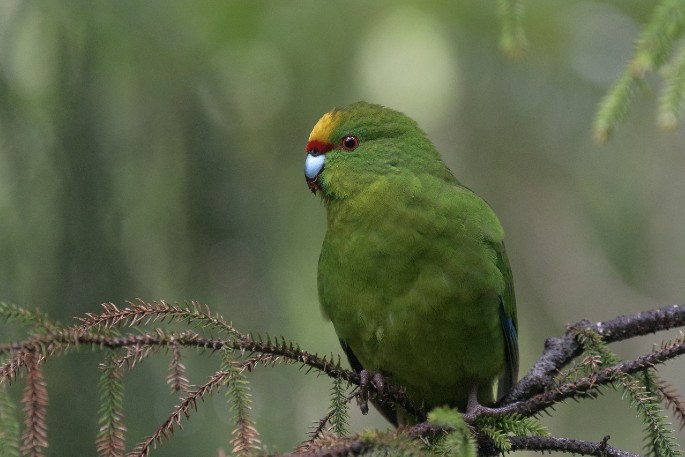This Content Is Only For Subscribers
Yellow-crowned parakeet/kākāriki numbers in the Landsborough valley tripled last spring compared to the previous year, results of the annual Department of Conservation bird count show.
Their loud chattering joined the steadily increasing chorus of native birds that have benefitted from long-term predator control and been monitored for more than 26 years at this South Westland site.
DOC principal scientist Colin O’Donnell, who has been involved since the start of monitoring, says bird life has flourished with counts of most native species steadily increasing.
“All native birds were predicted to decline without intervention but regular use of aerial 1080 combined with extensive trapping has turned their fortunes around.
“Mohua/yellowhead were heading towards extinction at this site but since 2018 have been the most common counted bird.”
Mohua have increased from a low of 14 in 1991 to 479 counted in the 350ha study area in 2023. The Landsborough is now a stronghold for this threatened species.
The spike in yellow-crowned kākāriki was due to the beech forest seeding (a mast) and fuelling a prolific breeding season in 2023, says Colin.
“When food is plentiful, kākāriki can keep breeding from late summer right through the winter and have up to three nests with an average of five chicks per nest.
“However, as tree hole-nesters and with noisy nestlings, kākāriki are also a target for stoats and rats.”
Beech masts are also a bounty for rats and mice, and stoats which feed on the rodents. Rising predator numbers in the Landsborough last year triggered the need for an aerial 1080 predator control operation, which took place in January this year. This successfully reduced rats to undetectable levels and would have knocked down stoats and possums.
The outcome for native birds won’t be known until the next bird count this coming spring.
Predator control began in 1994 in the Landsborough and has since expanded to include extensive trapping and aerial applications of 1080 when needed (eight treatments since 1998). The Landsborough’s rich birdlife makes it a priority area for DOC’s national predator control programme.
Central Otago NZDA’s new trapline in the lower Landsborough has added a line of defence, reducing the invasion of rats and stoats into the valley.
The Landsborough bird count is DOC’s longest dataset monitoring bird populations through repeated aerial 1080 applications. Since monitoring began native bird numbers have more than doubled, while introduced birds have halved likely due to increased competition from native birds.



